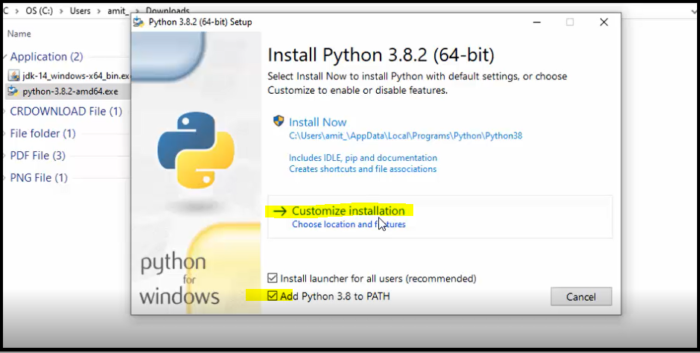How To Install Python Windows 8

Python is a popular programming language extensively used in computer programming, web development, data analysis, artificial intelligence, and many other fields. In this post, we will discuss how to install Python on a Windows 10 operating system. Firstly, let us understand the importance of installing Python. Python is an interpreted language, which means programs written in Python are not directly executed by the computer. Instead, a Python interpreter reads and executes the code written in Python. In simpler words, it is a platform for executing Python code. Installing Python on your Windows 10 operating system allows you to write and execute Python code easily. Preparation before Installation: Before we proceed with the installation, ensure that your Windows 10 is up-to-date. You can check for updates by following these steps: 1. Click on the Windows Start menu icon. 2. Type and open "Settings". 3. Click on "Update and Security". 4. Click on "Check for Updates". It is essential to have the latest Windows updates to avoid issues during the installation process. Another important preparation step is to choose the Python version you want to install. As of now, the latest stable version of Python is 3.10.0b1. However, some libraries and frameworks may require specific Python versions. Ensure that you check the requirements of your project/library/framework before proceeding with the installation. Installation Steps: Step 1: Downloading the Installer The first step is to download the Python installer from the official website at python.org. Once you enter the website, you will see the latest Python version available for download. Click on the "Download" button for the version you wish to install, and the download will start automatically. Step 2: Running the Installer Once the download is complete, locate the Python installer file in your downloads directory. Double-click the installer to start the installation process. Step 3: Customizing the Installation During the installation, you will encounter a screen with various customization options. Here, you can specify the installation path, which determines where Python is installed on your computer. By default, Python is installed in the C drive under "Program Files" or "Program Files (x86)" directory. However, you can select a different directory based on your preferences. You can also choose to add Python to the PATH environment variable. This means that other programs running on your system can access Python without having to specify the full path to the Python executable file. It is recommended to add Python to the PATH environment variable. Step 4: Installation Progress After you have customized the installation options, the installation will begin. The process will take a few minutes to complete, depending on the speed of your computer. Step 5: Verification Once the installation is complete, you can verify if Python is installed correctly by opening the command prompt and typing "python --version". This command will display the version of Python that is installed on your system. Image 1
4. Using Python on Windows

How to Download and Install Python 3.8 on Windows 10

If you are searching about Python Disable Path Length Limit in Windows | thetqweb you've visit to the right place. We have 3 Images about Python Disable Path Length Limit in Windows | thetqweb like 4. Using Python on Windows — Python 3.10.0b1 documentation, How to Download and Install Python 3.8 on Windows 10 - Studyopedia and also Python Disable Path Length Limit in Windows | thetqweb. Here you go:
How To Download And Install Python 3.8 On Windows 10 - Studyopedia
 studyopedia.com
studyopedia.com
install studyopedia
4. Using Python On Windows — Python 3.10.0b1 Documentation
 docs.python.org
docs.python.org
python installer
Python path limit disable length max. Python disable path length limit in windows. 4. using python on windows — python 3.10.0b1 documentation
Related post:
👉 How To Install Python Windows 11
👉 How To Install Pip Cv2
👉 How To Install Pip Jupyter Notebook
👉 How To Install Npm Bcrypt
👉 How To Install Npm Cli
👉 How To Install Python With Npm
👉 How To Install Npm In Windows 11
👉 How To Install Windows 10 From Usb From Bios
👉 How To Install Windows 10 By Command Prompt
👉 Install Pip On Rhel 8
👉 How To Install Xapk On Xiaomi
👉 What Is .xapk File And How To Install Xapk On Android
👉 How To Install Windows 10 Enterprise Ltsc
👉 How To Install Java Windows 10 64 Bit
Belum ada Komentar untuk "How To Install Python Windows 8"
Posting Komentar